Text

Le moulin rouge du Moulin Rouge a perdu ses pales!
Was going to take a break from posting today, but we had a bit of breaking news out of Paris: the famous cabaret Moulin Rouge's red windmill has lost its sails! They fell off at around 2 in the morning apparently, cause unknown. No injuries.
Article France Bleu Paris
5 notes
·
View notes
Text
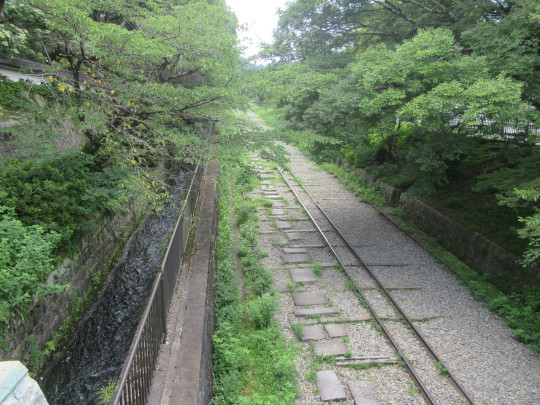
To end the "Canal Contraptions" mini-series, here's a brief look at the Keage Incline on the Lake Biwa canal in Kyoto. Located near Nanzen-ji and its famous aqueducts, it's apparently a popular sakura spot, not that I'd know visiting in July...
Boats were loaded onto wagons at one end of the slope, and hauled by an electric engine up or down before being unloaded back into the water at the other end. Thinking about it just now it sounded rather ludicrous to me, but I was picturing long European-style barges, but the boats of Meiji period Japan were probably not that big, as a picture of the surviving wagon shows.
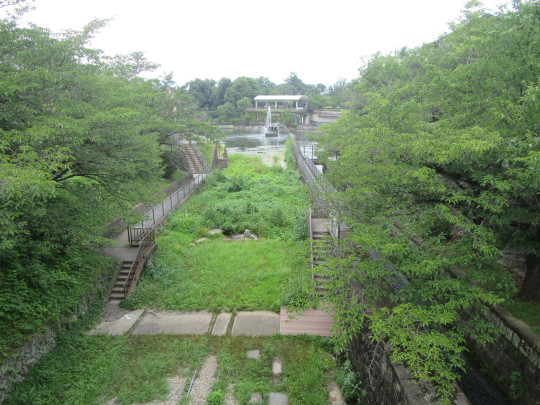
We didn't go down to the incline, it was just something the friends I was travelling with that day brought up between Nanzen-ji and our next destination. Something to go back for...
4 notes
·
View notes
Text
The Montech water slope

At around the same time as the "Inclined Plane" of Saint-Louis-Arzviller, other types of boat lifts were being engineered in other places. One of these was the Montech water slope, situated in Southern France on the Canal Parallel to the Garonne (Canal Latéral à la Garonne), the canal from Toulouse to Bordeaux which most people would probably refer to as the Canal du Midi - a better-known term though strictly speaking, the Canal du Midi is only the section from Toulouse to the Mediterranean.
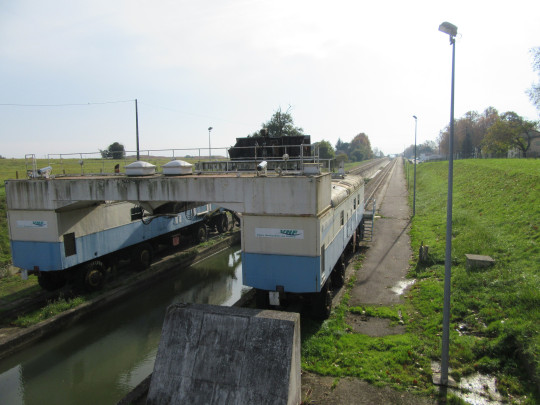
From what I can garner, the two-headed vehicle used on this slope is a conjoining of two Diesel railcars built by Soulé in the early 70s, running on tyres and featuring a daunting-looking shield. This shield would be lowered behind a boat, and the machine would travel up and down the slope, carrying along the boat and the water it bathed in!
However, the performance of this system is less impressive than the Inclined Plane. It bypasses 5 locks, and saves 45 minutes of travel time. That's not nothing, but if you arrived at an end and just missed the train, then going straight to the locks wasn't going to be much longer than waiting for the next one. Also, far more power is required to make this work (I'm reading 1000 hp motors, versus 125 hp for the Inclined Plane), and it's Diesel.
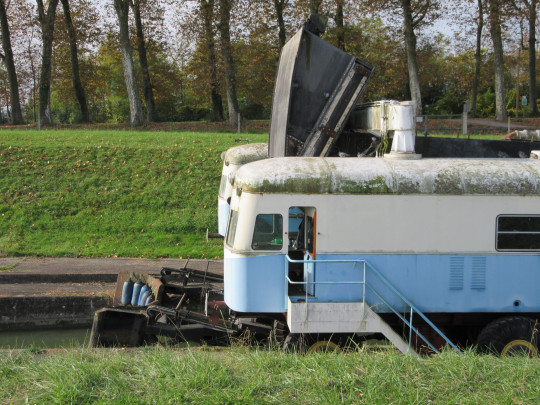
These photos were taken in late 2017, 8 years after the water slope closed. It was only serving leisure boats by then, and, as I've insinuated, it wasn't very economical to run. As far as I can tell, the 5 locks beside it never closed, and are in use today.
The slope and its tractor have since been renovated, and the site's current state can be seen in a Tim Traveller video published in 2021.
4 notes
·
View notes
Text
The abandoned Arzviller-Henridorff "lock ladder"

On my return to the Plan Incliné (previous post) in 2021, I added a walk along some of the section that the boat lift bypassed. The canal behind this door (lock n°17) has been closed and emptied, the tranquil flow replaced by an overgrown stream, but the paths along it have been maintained, and some sections added to improve the walking or cycling experience.

The lock houses, homes to the workers, are still standing, some used by artists as galleries and workshops.

The boat lift was created to bypass a system of 17 consecutive locks which took a whole day to traverse. I didn't go along the whole route to lock n°1 (I probably would have if Arzviller train station was still open), but beyond the "lock ladder" on the Western side is a 2 km canal tunnel, still in service today and a bit of a traffic jam, as it isn't wide enough for two boats to pass.
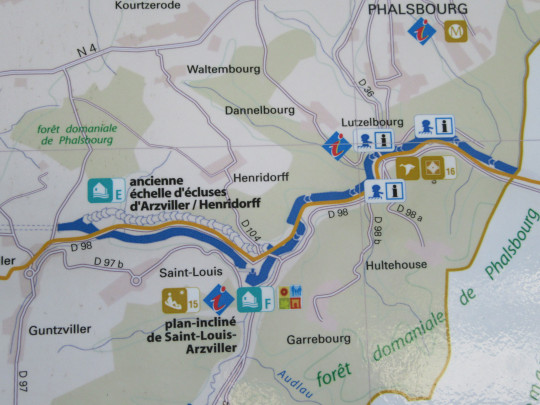
I probably should walk the whole route one day. As it's along a canal, it should be easy gradients, it's just the distance between Réding and Lutzelbourg train stations that needs to be covered. I think it'll be worth it, and a chance to see the entrances to the tunnels too.

5 notes
·
View notes
Text
Plan Incliné de Saint-Louis-Arzviller
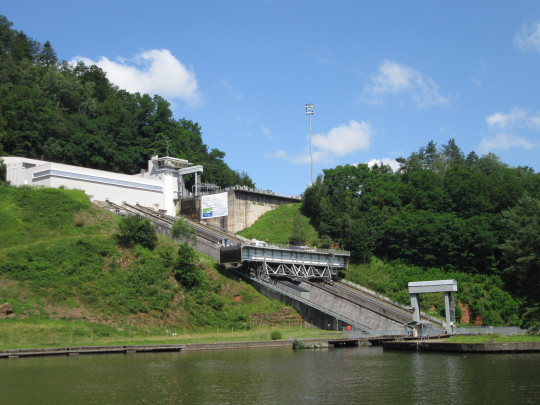
This is going to be a rather long post as there is a lot to say about this thing! But the short version is: this is a boat lift.
Built in the 1960s, this "inclined plane" was designed to carry barges as part of the fluvial coal transportation industry. However, that trade declined pretty much during the edifice's construction, and today, it almost exclusively serves leisure boats. But if you're going to do a canal cruise, this thing gives it quite the difference!

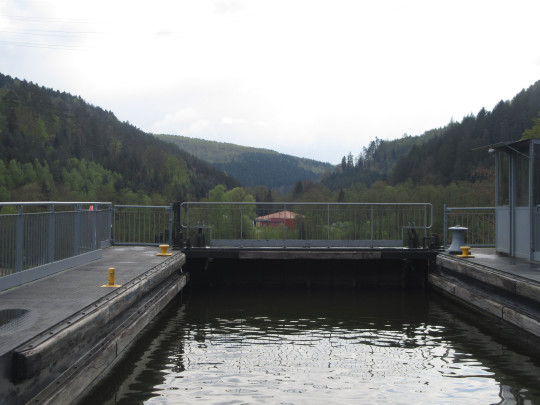
Its function is that of a lock, taking boats from the lower water level to the higher level, or vice-versa, but it does this by technically being a lift or elevator. A caisson carries the boats and the water up and down, using counterweights to ease the travel.
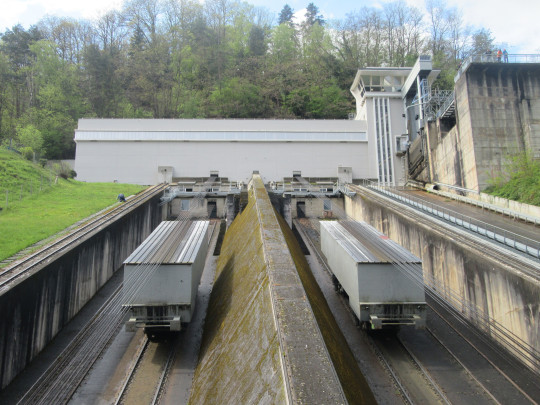
In fact, the caisson will take on more or less water in order to be heavier or lighter than the counterweights. Though the total mass of the caisson and counterweights is enormous, the difference in mass between them isn't, so very little power is needed to get the system moving, and gravity does most of the work. Two relatively modest electric motors (centre of photo below, steps to the right for scale) start the movement and control the speed.
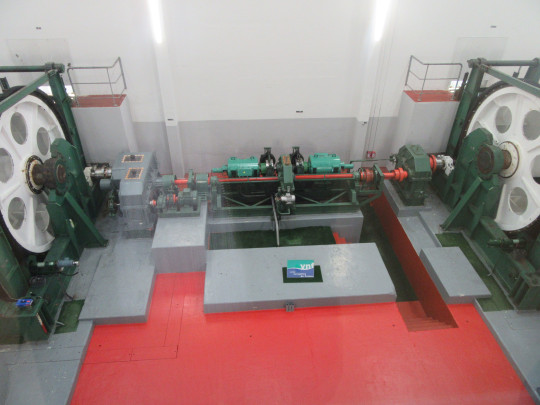
As such, the system uses comparatively little power, for impressive results. The boat lift was built to bypass a "ladder" of 17 locks which required a whole day to go through, while the travel time of the lift is just 4 minutes. The ride is seamless and very comfortable, effortless even, for reasons mentioned above but also because the effort is distributed across 5 times as many cables as physically required to hold everything together!
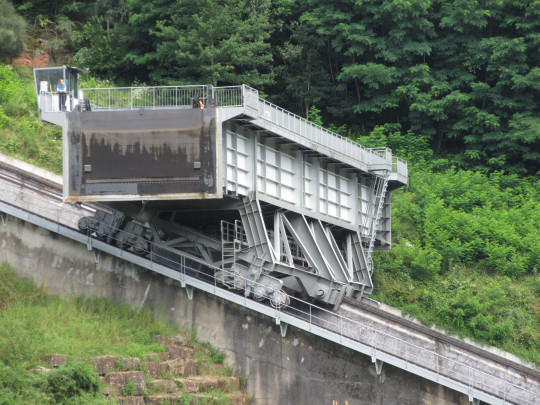
Water-tightness is also extremely important, not just for the caisson obviously, but also for the other doors, particularly the top door, which is holding back a whole length of canal. A serious incident in 2013 has led to further reinforcement of redundancies and the construction of an emergency dam closer to the lift in the event of major leaks.
With a lot of freight traffic in mind, the structure was actually designed for two caissons, side-by-side, as evidenced by a second gate hole visible at the top of the ramp (4th picture), and extra space at the bottom, visible in the final picture below. Doubling the caissons would have meant doubling the counterweights, and a second set of rails were laid for that scenario and are visible in the 4th picture. As mentioned earlier, demand dwindled as the lift was being built, so it never operated with two caissons.

For a long time, this place was a childhood memory, visited during a school trip. In my hiking spree after the 2020 and 2021 lockdowns, I sought this place out again and was glad to see it was still working. And just this week, I returned with my parents and rode the lift! It's without doubt one of my favourite pieces of engineering.
3 notes
·
View notes
Text

A couple of quick-fire photos from the boat on a recent ride on the Canal de la Marne au Rhin. Picture sharpness isn't always fantastic when it's a rather fast reaction situation, but I still like this duck!

A Belgian Série 13 loco with freight, crossing a viaduct in North-Eastern France. The 13s are very flexible but do not support 15 kV, so the loco will be changed at the German or Swiss border if its cargo continues on.
#France#Moselle#Canal de la Marne au Rhin#Viaduc de Hofmuhl#duck#freight train#SNCB#Série 13#2024-04
4 notes
·
View notes
Note
Hello! I just saw your post about the conference. I know it's very niche, but I'd love to hear / read more about your sangaku presentation. I actually went back to Konnō Hachiman-gū this afternoon, hoping to see more examples, but no such luck. (I cannot decipher them, of course, but I taught English at a faculty of engineering, and my students could. Sometimes. )
I'll put together something about the shrine, but どうぞお先に。Nudge nudge hint hint.
Hi, thanks for the message!
The presentation was in two main parts: first the historical context of the Edo period and function of sangaku in developing mathematics during that time, and second a closer look at Kashihara Miminashi Yamaguchi-jinja's example with a modern solution. I can't read the sangaku in full, but I have been able to pick out the parts with numbers and compare some of their results with the formulas.
I can probably put together a mini-series at some point. Which parts would you want to hear more about? (That's a general question btw: anyone can reply and add the conversation of course.)
36 notes
·
View notes
Text
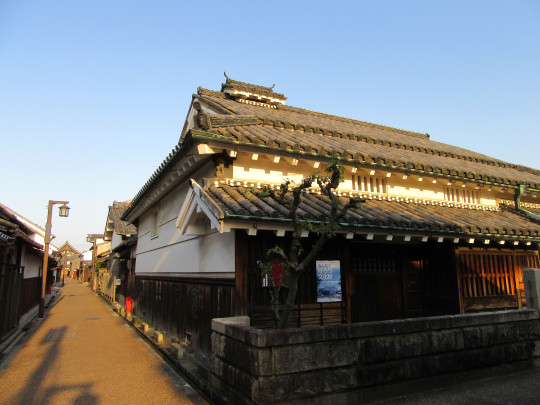
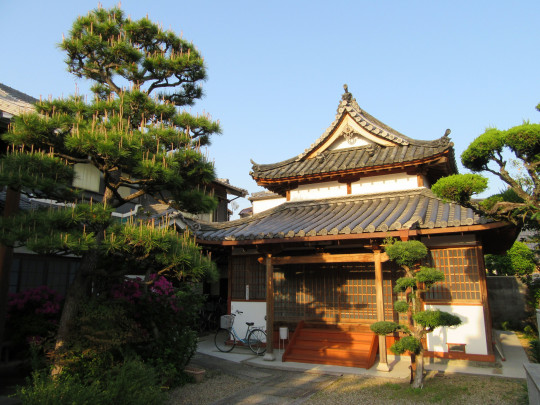
The conference went well, as far as I can tell, so here are a couple of low-sun views of Kashihara's preserved Edo-period area, Imai-chô, as an outro. The first building seems to be operating as an art gallery (maybe?), while the other is a neat little temple. Both are on the same street, 大工町筋, which Google Translate says could be Daiku-chô suji or Daiku-machi suji... or it could be something else, I don't remember reading the name myself on site.
Different place next.
4 notes
·
View notes
Text
Here we are: Miminashi-yama

When I visited Kashihara, looking to explore some deep Japanese history in the former province of Yamato, I expected to move around a bit, but there was actually enough in Kashihara itself to make for a busy day.
First up was this curious green round space in the middle of a residential area on the town map I'd picked up. It just seemed conspicuous to me, I decided to check it out.

This is Miminashi-yama, one of the Yamato Sanzan, or Three Main Mountains of Yamato. Though it stood out on the map and it does stand out in the plain around it, it's not huge, and it's a short climb to the top where a shrine awaited.

In that shrine, a sangaku geometry tablet is displayed. By chance, based on a whim, I had found one! Nearly six years on, I've finally solved it - it's not very difficult mathematically, it's just taken me this long to get on with it, having said that, even today I'm still figuring out extra things on it! - and will be presenting it at a conference tomorrow. I wouldn't have thought it at the time... I guess curiosity didn't kill the cat that day!
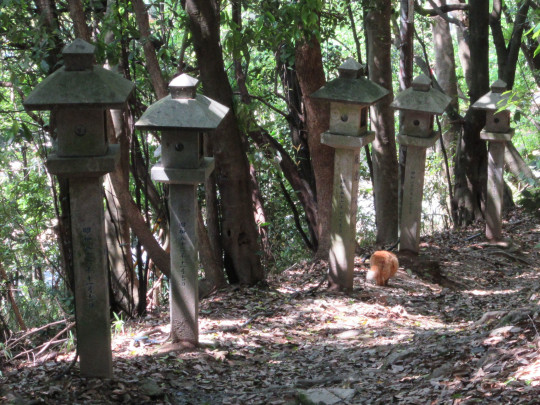
#Japan#Kashihara#Miminashiyama#Yamato Sanzan#sangaku#橿原#耳成山#耳成山口神社#大和三山#it's humbling to think how these things add up#small decisions and good fortune#oh and that's the Fancy Pants cat from yesterday on the path#2018-04
5 notes
·
View notes
Text
It's time to go back to Kashihara, and let's start by meeting the local animals!



I'm getting real "fancy pants" vibes from the cat! But to be fair, it is a darn good looking cat.
That is all until I think of something more intricate to talk about.
#Japan#Kashihara#Kashihara-jingu#Fukada-ike#Miminashi-yama#duck#turtle#cat#橿原#橿原神宮#深田池#耳成山#カモ#亀#猫#2018-04
4 notes
·
View notes
Text
Everything is ready for Tuesday! How this particular configuration works, as well as the one below, will be covered - we can talk about it on here too afterwards if anyone's interested.


C'est avec grand plaisir que je présenterai le mardi 16 avril à la Maison Universitaire France-Japon de Strasbourg une conférence sur la géométrie pendant la période d'Edo, avec en support le sangaku de Kashihara. Entre grande Histoire et petits calculs.
Lien vers les détails
4月16日(火)、ストラスブール市の日仏大学会館に江戸時代の算額についてコンファレンスをします。楽しみにしています!
Looking forward to giving a conference on Edo-period geometry on 16 April at Strasbourg's French-Japanese Institute. Expect a few posts about Kashihara around then. Has it really been 6 years?...
9 notes
·
View notes
Text
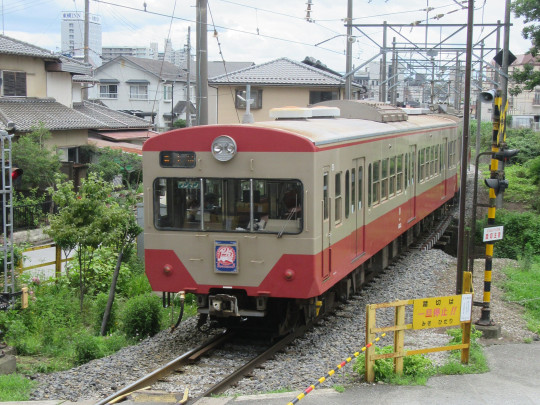
A little local train in Hikone: Ômi Tetsudô is a private company that's been around in the area for over 125 years, hence the panel on this particular train, in retro colours.
Japan has many small lines run by small companies which were never nationalised. However, Ômi Tetsudô is owned by the larger private rail company Seibu, based in the North-Western sector of Tokyo, whose main route is Ikebukuro to Chichibu. Ômi mainly runs second-hand Seibu stock.
1 note
·
View note
Text
Hikone Sawayama: summit & castle
It's not about what is there today, as much as it's about what was there. Sawayama was the original location of Hikone Castle, and it is quite possibly the most important castle in Japan to have been completely lost, as it was the castle of Ishida Mitsunari, the leader of the Western Army which lost the battle to unite Japan following the death of Toyotomi Hideyoshi. There are so few traces of the castle, no obvious tell-tale structures... This small altar may trace its roots back to the days of the castle, or maybe not, but this is just about it.
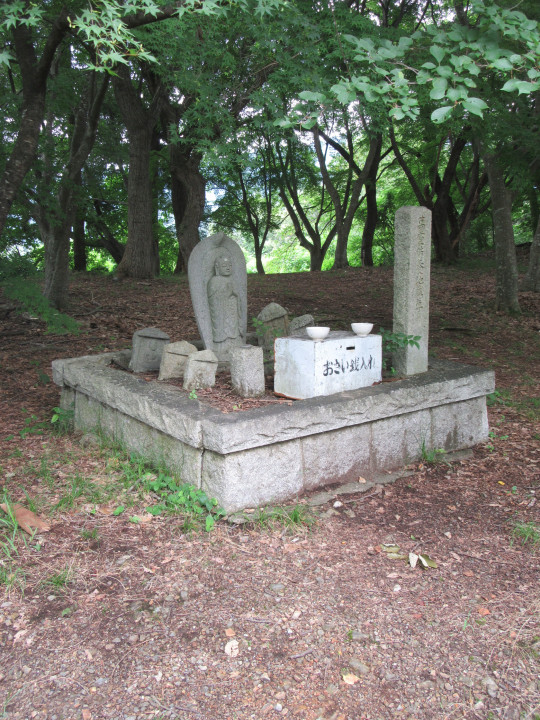
Sawayama Castle was thoroughly dismanted after 1600 following the defeat of Ishida, as the new lord of the area, Ii Naomasa, appointed by the victorious Tokugawa clan, relocated the castle to a smaller hill closer to Lake Biwa. Hikone Castle, which still stands today, basically recycled the materials from Sawayama, and the view of the "new" castle complex and the lake is the main draw for hikers today.

The summit offers good views of the mountains on the other side too, with the industrial complexes near Maibara, most noticeably Fujitec and their 170 m-tall elevator test tower, in the foreground.
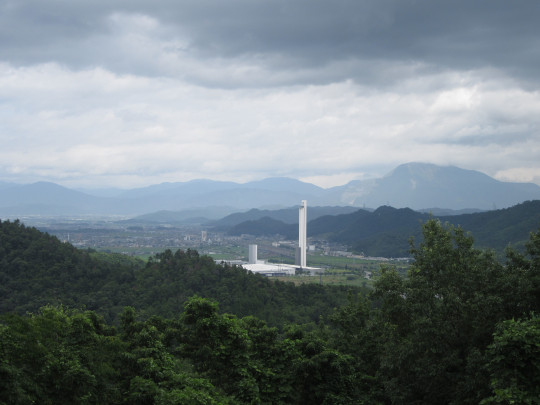
3 notes
·
View notes
Text
Hikone Sawayama: base

Walking North along the railway from Hikone station, one reaches the base of the hiking trail up Sawayama. After passing Nagabayashi Inari-jinja, a typical shrine dedicated to the shintô deity of prosperity with its succession of red torii gates, several temples appear, featuring monuments to two historical figures of Hikone, Ishida Mitsunari and Ii Naomasa. More on them when we reach the top.

This is Ryôtan-ji Sanmon, the "gate to the mountain" which leads us to the grounds of Ryôtan temple and starting the short, sharp climb. As we begin, we are met with more popular Japanese deities: the Shichi-Fukujin, or Seven Lucky Gods.
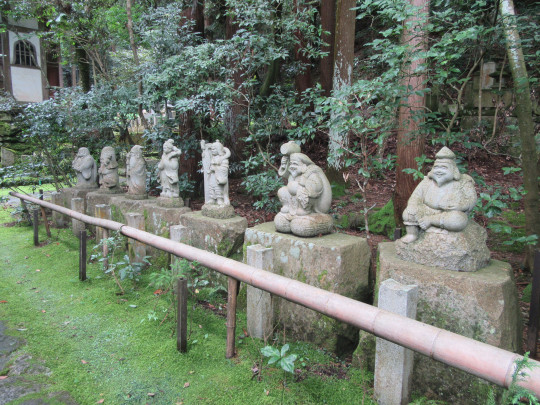
Apparently Ryôtan-ji has a fantastic zen garden, but we missed it.
3 notes
·
View notes
Text

My favourite cherry blossom spot in Strasbourg is the Citadelle. The remains of the garrison built under Louis XIV are now a gorgeous park by the Rhône-Rhine canal, and the cherry blossoms there are of the variety that bloom into pompoms.

I haven't been to the park this year, only spotting from a distance that the trees are currently in bloom, somewhat earlier than usual. So here are some pictures from a previous year - the year I first saw this wonderful tree at the ruin's entrance.

3 notes
·
View notes
Text

While some wait for cherry blossoms as a sign of spring (and this includes me), another sign of the season in Alsace is the stork. Saw my first one in the sky this week - but this photo is from a previous year.
3 notes
·
View notes
Text

C'est avec grand plaisir que je présenterai le mardi 16 avril à la Maison Universitaire France-Japon de Strasbourg une conférence sur la géométrie pendant la période d'Edo, avec en support le sangaku de Kashihara. Entre grande Histoire et petits calculs.
Lien vers les détails
4月16日(火)、ストラスブール市の日仏大学会館に江戸時代の算額についてコンファレンスをします。楽しみにしています!
Looking forward to giving a conference on Edo-period geometry on 16 April at Strasbourg's French-Japanese Institute. Expect a few posts about Kashihara around then. Has it really been 6 years?...
9 notes
·
View notes